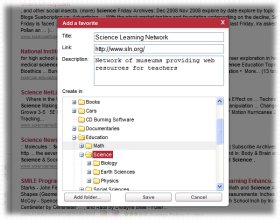|
Education
Web
Viewing 1-2 of 2 total results
definition maps, analogies, using the dictionary and other reference materials, using word parts, using morphemic analysis, using context clues ) word families: A collection of words that share common ortho- graphic rimes (e.g., thank, prank, dank). word recognition strategies:...
1
0
definition maps, analogies, using the dictionary and other reference materials, using word parts, using morphemic analysis, using context clues ) word families: A collection of words that share common ortho- graphic rimes (e.g., thank, prank, dank). word recognition strategies: Strategies for determining the pronun- ciation and meaning of words in print.
11
0
http://www.k12.wa.us/CurriculumInstruct/reading/pubdocs/ReadingEALR-GLE.pdf#page=11
www.k12.wa.us/CurriculumInstruct/reading/pubdocs/ReadingEALR-GLE.pdf#page...
GRADE LEVEL EXPECTATIONS 9 GLE 5 6 7 8 9/10 1.1.1 1.1.2 1.1.3 1.1.4 EALR 1: The student understands and uses different skills and strategies to read. <span class="highlight">Component</span> 1.1: Use word <span class="highlight">recognition</span> skills and strategies to read and comprehend text. EALR 1 “Phonemic Awareness and knowledge <span class="highlight">of</span> letters are the two best predictors <span class="highlight">of</span> how well children will learn to read.” n Linnea Ehri, Ph.D. National Reading Panel, City University <span class="highlight">of</span> New York
16
0
http://www.k12.wa.us/CurriculumInstruct/reading/pubdocs/ReadingEALR-GLE.pdf#page=16
www.k12.wa.us/CurriculumInstruct/reading/pubdocs/ReadingEALR-GLE.pdf#page...
pleasure reading vs. reading <span class="highlight">for</span> <span class="highlight">information</span>). Apply different reading rates to match text. square6 Adjust reading rate to match difficulty and type <span class="highlight">of</span> text and the purposes <span class="highlight">for</span> reading (e.g., skimming <span class="highlight">for</span> facts, scan- ning <span class="highlight">for</span> key words, and close/careful reading <span class="highlight">for</span> understanding new or complex ideas). Fluent readers focus attention on understanding what they read, rather than concentrating on decoding the words
20
0
http://www.k12.wa.us/CurriculumInstruct/reading/pubdocs/ReadingEALR-GLE.pdf#page=20
www.k12.wa.us/CurriculumInstruct/reading/pubdocs/ReadingEALR-GLE.pdf#page...
18 EALR <span class="highlight">COMPONENT</span> EALR 2 EALR 2: The student understands the meaning <span class="highlight">of</span> what is read. <span class="highlight">Component</span> 2.1: Demonstrate evidence <span class="highlight">of</span> reading comprehension. K 1 2 3 4 2.1.5 Understand how to infer/predict meaning. square6 Use pictures and culturally relevant text read aloud and/or during shared reading to predict what will happen next; support predictions using <span class="highlight">information</span> from the text. square6 Make inferences orally before, during, and after hearing a story using prior knowledge, story structure, and
29
0
http://www.k12.wa.us/CurriculumInstruct/reading/pubdocs/ReadingEALR-GLE.pdf#page=29
www.k12.wa.us/CurriculumInstruct/reading/pubdocs/ReadingEALR-GLE.pdf#page...
GRADE LEVEL EXPECTATIONS 27 EALR 2: The student understands the meaning <span class="highlight">of</span> what is read. <span class="highlight">Component</span> 2.3: Expand comprehension by analyzing, interpreting, and synthesizing <span class="highlight">information</span> and ideas in literary and informational text. EALR 2 GLE 5 6 7 8 9/10 2.3.1 Analyze informational/expository text and literary/narrative text <span class="highlight">for</span> similari- ties and differences and cause and effect relationships. W square6 Find similarities and differences within and between texts using text-based evi- dence (e.g., facts and
48
0
http://www.k12.wa.us/CurriculumInstruct/reading/pubdocs/ReadingEALR-GLE.pdf#page=48
www.k12.wa.us/CurriculumInstruct/reading/pubdocs/ReadingEALR-GLE.pdf#page...
46 EALR <span class="highlight">COMPONENT</span> EALR 4: The student sets goals and evaluates progress to improve reading. <span class="highlight">Component</span> 4.2: Develop interests and share reading experiences. EALR 4 GLE K 1 2 3 4 4.2.1 Understand how readers choose books. square6 Choose books and share with others with teacher guidance. Understand how readers choose books. square6 Identify favorite books and share reasons <span class="highlight">for</span> the choice with others. square6 Self-select books at an <span class="highlight">independent</span> level and an instructional level. Understand that readers have
53
0
http://www.k12.wa.us/CurriculumInstruct/reading/pubdocs/ReadingEALR-GLE.pdf#page=53
www.k12.wa.us/CurriculumInstruct/reading/pubdocs/ReadingEALR-GLE.pdf#page...
feelings. scan: To examine or read something quickly, but selectively, <span class="highlight">for</span> a purpose. scanning: Examining or read something quickly, but selectively, <span class="highlight">for</span> a purpose. schema: The accumulated knowl- <span class="highlight">edge</span> drawn from life experiences that a person has to help under- stand concepts, roles, emotions, and events. secondary sources: Sources <span class="highlight">of</span> <span class="highlight">information</span> that are derived from primary or original sources. segment: The act <span class="highlight">of</span> separating the sounds in a word in order to assist decoding or spelling. semantic mapping
54
0
http://www.k12.wa.us/CurriculumInstruct/reading/pubdocs/ReadingEALR-GLE.pdf#page=54
www.k12.wa.us/CurriculumInstruct/reading/pubdocs/ReadingEALR-GLE.pdf#page...
definition maps, analogies, using the dictionary and other reference materials, using word parts, using morphemic <span class="highlight">analysis</span>, using context clues ) word families: A collection <span class="highlight">of</span> words that share common ortho- graphic rimes (e.g., thank, prank, dank). word <span class="highlight">recognition</span> strategies: Strategies <span class="highlight">for</span> determining the pronun- ciation and meaning <span class="highlight">of</span> words in print.
evaluate how history shapes the present and future. Component 4.1: Understands historical chronology. Component 4.2: Understands and analyzes causal factors that have shaped major events in history. Component 4.3: Understands that there are multiple perspectives and interpretat...
1
0
evaluate how history shapes the present and future. Component 4.1: Understands historical chronology. Component 4.2: Understands and analyzes causal factors that have shaped major events in history. Component 4.3: Understands that there are multiple perspectives and interpretations of historical events. Component 4.4: Uses history to understand the present and plan for the future. Social Studies EALR 5: SOCIAL STUDIES SKILLS - The student understands and applies reasoning skills to conduct research
5
0
http://www.k12.wa.us/SocialStudies/pubdocs/SocialStudiesGLEs.pdf#page=5
www.k12.wa.us/SocialStudies/pubdocs/SocialStudiesGLEs.pdf#page=5
evaluate how history shapes the present and future. <span class="highlight">Component</span> 4.1: Understands historical chronology. <span class="highlight">Component</span> 4.2: Understands and analyzes causal factors that have shaped major events in history. <span class="highlight">Component</span> 4.3: Understands that there are multiple perspectives and interpretations <span class="highlight">of</span> historical events. <span class="highlight">Component</span> 4.4: Uses history to understand the present and plan <span class="highlight">for</span> the future. Social Studies EALR 5: SOCIAL STUDIES SKILLS - The student understands and applies reasoning skills to conduct research
31
0
http://www.k12.wa.us/SocialStudies/pubdocs/SocialStudiesGLEs.pdf#page=31
www.k12.wa.us/SocialStudies/pubdocs/SocialStudiesGLEs.pdf#page=31
societies <span class="highlight">face</span>. GLE K 1 2 3 4 5 2.4.1 Recommended Scope & Sequence E C ONOMI C ISS U E S Understands how geography, natural resources, climate, and available labor contribute to the sustainability <span class="highlight">of</span> the economy <span class="highlight">of</span> regions in Washington State. Examples: − Explains that available labor resources determine economic opportunities <span class="highlight">for</span> the agricultural industry. − Draws conclusions about how the economy in each region <span class="highlight">of</span> Washington State could change as a result <span class="highlight">of</span> the
|
